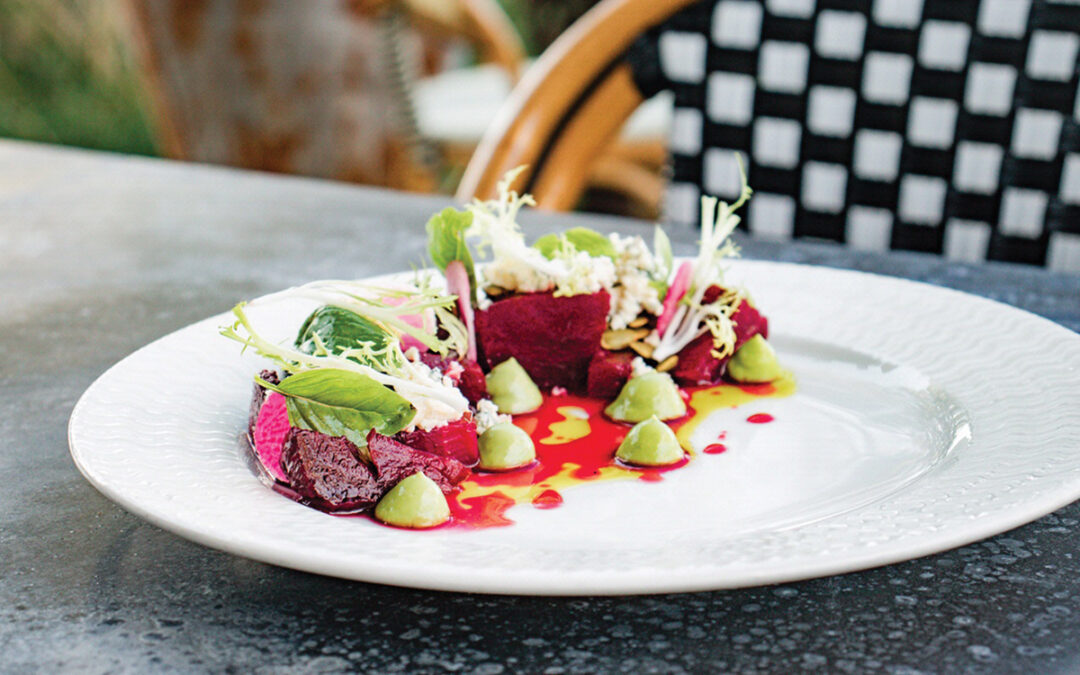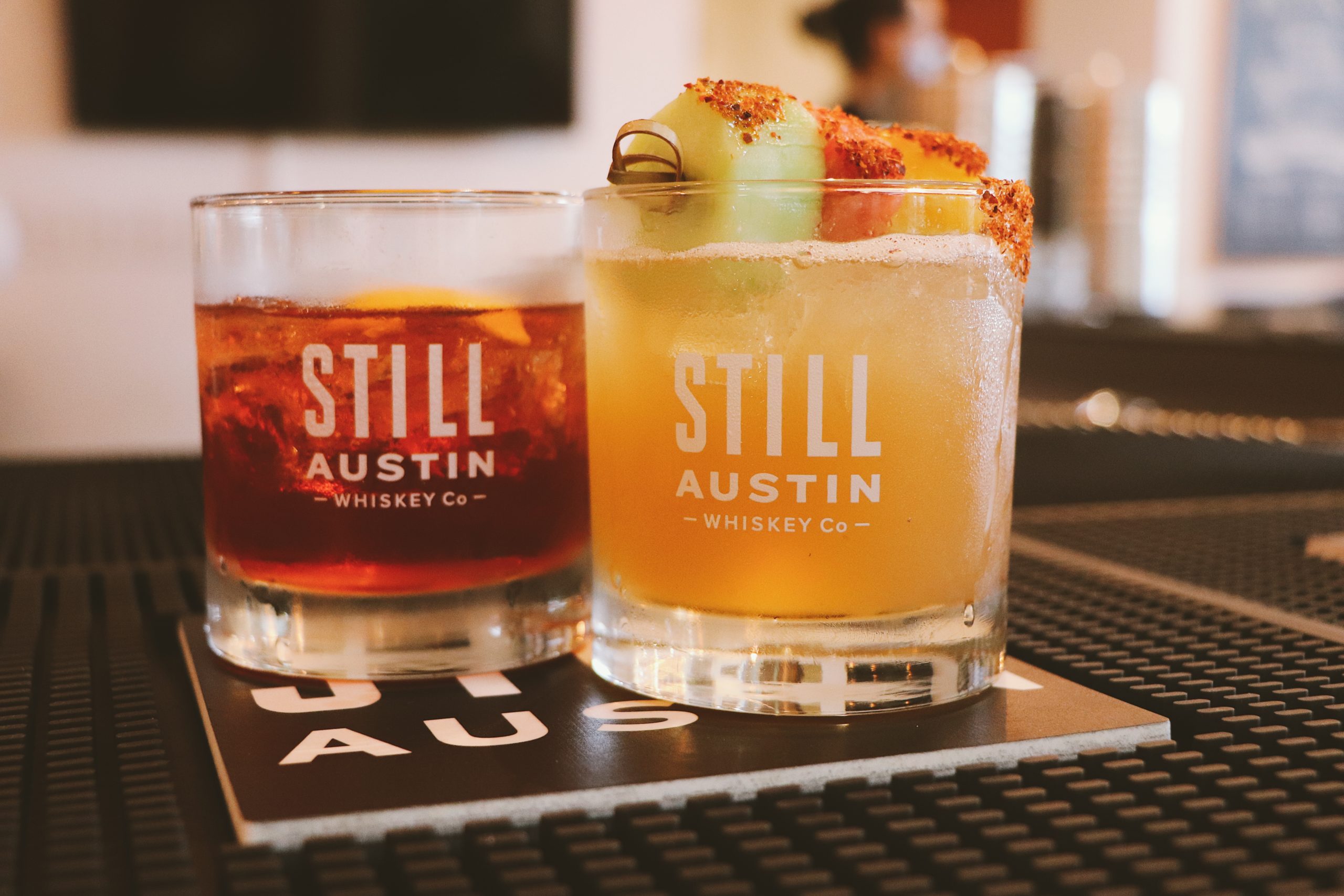These days, most of the attention in the food world seems to be going to exotic cuisines such as the Nonya of Malaysia, or to Spaniards and their eager disciples fashioning foods from foams and jellies. It’s accordingly comforting to come across a menu on which calf liver and caramelized onions is featured — with only a raspberry vinegar sauce to hint at the 21st century.
This is not to suggest that Café Europa is clinging to a dusty past or wallowing in culinary nostalgia; chef/owner Guy Collinet, veteran of several of San Antonio’s finest hotels, is merely paying homage to both his cultural and gastronomic upbringing. Sometimes that homage is direct and unadulterated, with the traditional onion soup gratinée a case in point: it’s the real deal with a toasted crouton and melted Gruyere. The classic escargots bourguignon and house-cured gravlax could also be straight out of the hushed-tones and high-prices past.
But for all its aura of sanctity, chef Collinet’s duck foie gras begins to push the envelope slightly with its Granny Smith apple compote and, in our case, a small serving of the evening’s wild mushroom risotto special. Starting with lush liver from the Hudson River Valley, Collinet simply sears the pristine product, and it melts in your mouth, with the caramelized apple adding a sweet-tart component that only amplifies the experience.
It is at times such as this that tradition reasserts its sway yet again: We yearned for a classic Sauternes to balance the unctuous texture of the liver. For all of their virtues — and both the bone-dry Vielle Ferme rosé and the singularly smoky Geyser Peak chardonnay smacking of passion fruit had virtue to spare — our wines by the glass couldn’t hold up to the foie gras. They did remarkably well, however, with a salad of tomato and fresh mozzarella, the typical Italian caprese by its more common name.
Typical perhaps, common, no; the addition of crushed pistachio was more than an adornment, the balsamic vinaigrette and fresh basil added a lilting grace note, and a tiny toast mounded with tapenade (Collinet is not afraid of anchovies) delivered the coup de grâce. This is a dish that can either fall flat (don’t order it in wimpy-tomato winter) or soar, depending on the quality of the ingredients. Further enhanced by a handsome presentation, this one soared.
Smartly turned out in a yellow suit with floral embroidery, the lively Rosalinda Collinet (she and the chef met when both were at the Plaza San Antonio in its Four Seasons incarnation) appeared at just the right time with a test: her latest off-the-wine-list find, in decanter. Dining companion (herself in slinky slacks and a flowing top) and I pegged the cabernet component right away, but fell flat on the origin. “Definitely not French”, claimed I with all assurance, “so it’s got to be Californian with so much forward fruit.” Wrong. Her 2001 Warwick Estate Reserve Simonsberg Stellenbosch was South African, and also contained small amounts of merlot and cabernet franc. Full of spice, mint, cedar and cassis, it was in a rush to deliver all the goods up front, leaving little for a contemplative finish, but it nevertheless was extremely appealing and did the next duck product proud as well.
Entrées chez Café Europa run an A to, oh, let’s say E gamut, with seafoods such as a baked red snapper garnished with crab and mussels at the top of the list and beef ballasting the bottom. (The medallions, for example, come with a wild mushroom ragout and a parsnip purée.) But I’m a sucker for seared duck breast whenever I think there’s a chance it will be properly prepared, and here I should have given the kitchen (just Collinet with one other cook) more credit: I asked for the breast medium rare and could well have had it really rare. In the right hands, that’s the way to go. This act of culinary cowardice on my part notwithstanding, the duck was divine, though little citrus was to be found in the advertised orangegastrique.
(Gastrique, by the way, is a sweet-sour sauce component made with vinegar and sugar and most often used with traditional duck a l’orange, of which CE’s breast is a variation.) A flavorful jasmine and wild rice combination with wild mushrooms, some quickly sautéed baby broccoli (or broccoli rabe) and a couple of slivers of slender asparagus completed the photogenic presentation.
The Seafood Trio was handsome, too, with spiky chives adding a dynamic element. The plate’s jumbo shrimp were among the best I’ve had in recent memory — so good they were almost sweet. And a crab cake — not spectacular, yet luxurious enough to take its place proudly on the plate — was subtly infused with the classy crustacean. But with the exception of an appealing pond of leek fondue, the remainder of the trio, a tasty yet almost leathery sliced scallop bedded on a thin and too-dark (and consequently chewy) potato galette, was slightly off key. A creamy thyme sauce was almost equally at home on all of the pieces and parts, however, suggesting that if the hand can occasionally slip, the creative spirit is alive and well at all times.
As is often the case, dessert redeems all, and it was at this point in the meal’s progress that I learned something new about chef Collinet: Pastry is his passion. “He just doesn’t have the staff to do it,” said Rosalinda, and immediately we regretted not ordering either the chocolate mousse cake or the caramelized apple tart. But we didn’t regret for long. A towering Grand Marnier soufflé (if a dish can be tiny and towering at the same time) arrived and was served with the appropriate pomp by tapping the top and pouring in a crème anglaise. Feel free to disagree, but this beats chocolate any day.
Continuing in the classic vein, we had also ordered a crème brûlée, avant garde only in that it’s served on an unwrapped tuile cookie. Or so we thought. Chef Collinet’s just-dense-enough version, perhaps indicative of his pastry chef manqué leanings, came adorned with shattered sugar looking for all the world like — yes, the comparison is inevitable — molten stained glass. Turns out that the product starts out as lozenges of German-made colored sugar that one simply (easy for him to say) melts at high temperature on a Silpat (silicon) mat. Let cool, shatter, strew artfully about. Who says that traditional cuisine is static?
Author: Ron Bechtol
Photographer: Janet Rogers









0 Comments